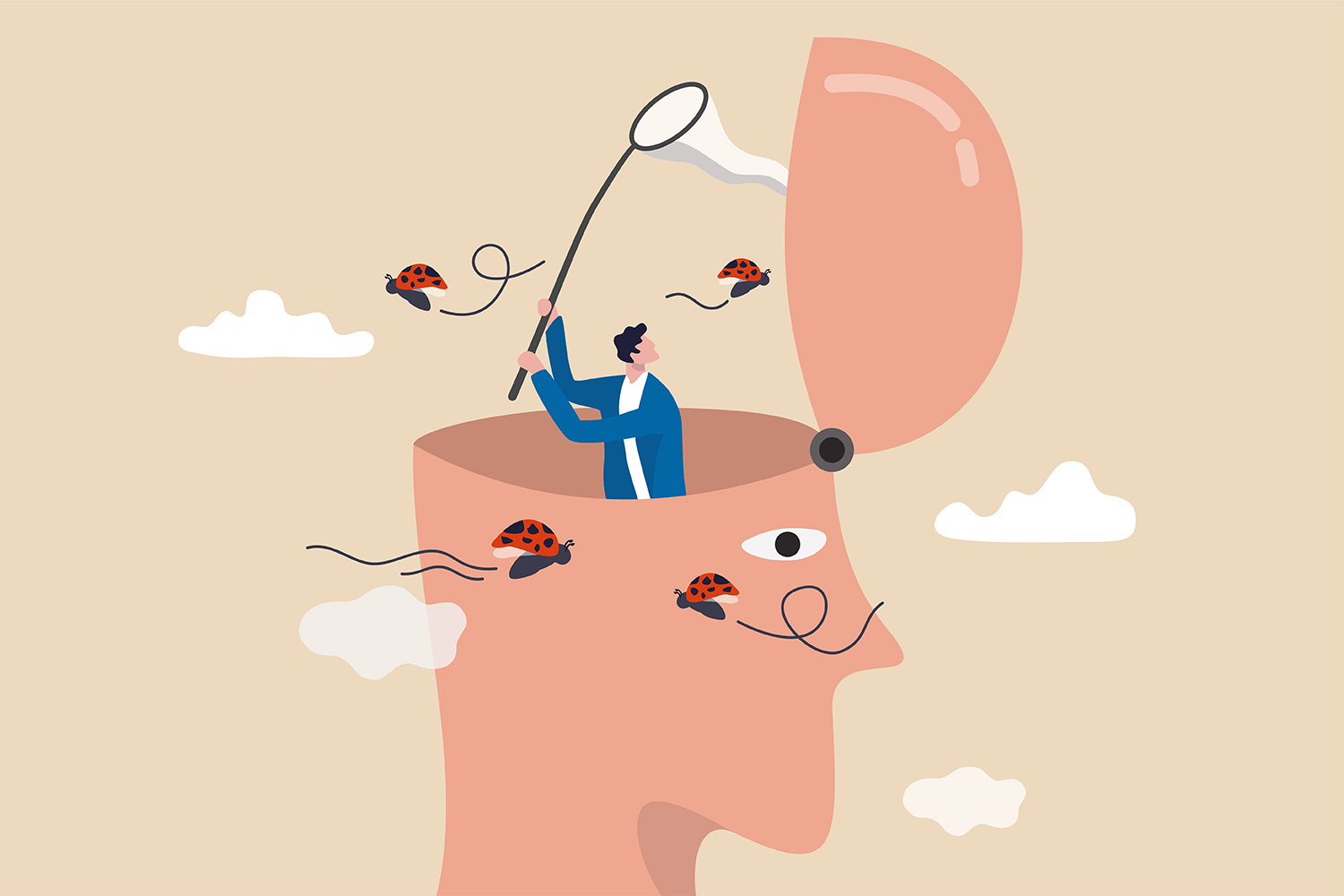Many, many years ago, I worked at the magazine Yoga Journal. Our small editorial team created thousands of stories highlighting the many uplifting qualities of the physical, mental, and spiritual practice.
Ironically, it also was one of the most stressful work environments I’d seen.
Even though the magazine’s topics were about calmness, attentiveness, and inner growth, we still dealt with the same job stresses everyone else does: tight deadlines, ongoing staff conflicts, workdays that routinely stretched into late nights. This was why our boss stressed the anti-stress practice of meditation. From onsite classes to offsite retreats, meditation taught our busy brains how to stay in the moment.
Are you paying attention?
It’s no secret that attention control is an essential element for time management and productivity. Yet to stay focused on the task at hand, you need to avoid letting distractions derail your goals.
This is where practicing mindfulness comes in. Small studies suggest mindful meditation can be a valuable technique to calm a wandering mind and help a person maintain laserlike attention. In fact, just a few minutes every day can make a difference.
Meditation, by the way, is an umbrella term for a wide range of spiritual and relaxation practices. There are many styles of meditation and different ways to approach it.
Within this broad category, neuroscientists have looked at how two specific meditation styles with roots in Buddhism can be used to enhance cognitive processing: focused attention (FA) meditation and open monitoring (OM) meditation. Developing a regular practice of either one can help train your brain to increase attention, focus, and concentration.
Below is a look at each one.
How can you practice focused attention meditation?
This type of mindful meditation has four key elements:
- directing and sustaining attention toward a specific object or sensation
- detecting distractions and mind-wandering
- disengaging from distractions and shifting attention back to your focal point
- reframing distraction as “just a thought.”
When practicing this meditation style, you keep your attention focused on a particular object or sensation, such as the sensation of air flowing in and out of your nostrils as you breathe. To sustain this focus, you must constantly monitor the quality of your attention. If your mind begins to wander, you identify the source of the distraction, then return your attention to your focal point.
For example, if you note your attention has shifted from your breathing to a meeting scheduled for later in the day, don’t let the thought linger. Instead, put all your focus back on your breathing.
How might practicing this regularly improve your ability to pay attention? It supports three skills necessary for regulating attention:
- perceiving distraction without letting go of your object of focus
- disengaging from distraction
- promptly returning your attention to your focal point.
As you hone your FA meditation skills, it becomes easier to detect distractions and more quickly return to your object of focus. Eventually, maintaining concentration becomes virtually effortless. In everyday life, this translates into an improved ability to direct your attention to information relevant to your goals, and to maintain this focus even when faced with competing input. It also helps you switch between tasks without becoming distracted.
How can you practice open monitoring?
A second type of mindful meditation differs from focused attention meditation in the following ways:
- no specific object of focus
- nonreactive observation and labeling of experience
- detached awareness of automatic subjective interpretation of thoughts and emotions.
During this more advanced meditation practice, you allow your attention to flow from moment to moment without focusing on any particular object or sensation. The process helps you disengage from distractions and immerse yourself, instead of observing an ongoing stream of experience.
The goal of OM is to gain a clear awareness of aspects of your mental life that are usually hidden. By training your brain in this way, you can better observe and modify your thinking patterns and emotional habits. As a result, you’re able to act intentionally rather than reactively.







